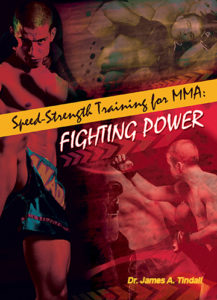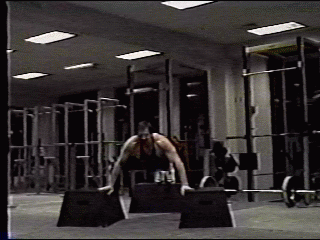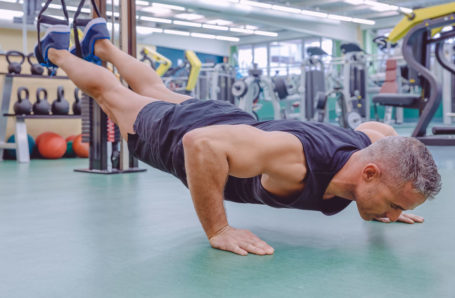As many of our readers know, I have spent a couple of decades utilizing speed-strength training for professional athletes and developing NASA Astronaut training protocols for deep space travel. Consequently, these exercises are not for the faint of heart, i.e., they are not intended for base beginners or newbies. However, I will break them down and list three exercises for the beginner, 4 for the intermediate, and 3 for the advanced practitioner.
It is likely that you already know about the benefits of what I term body-weight exercises, which you do not need equipment to do and thus, they are perfectly suited for keying your muscles and body before an event, while traveling, and burning calories to name a few. Overall, the exercises below will build muscle, burn fat, and improve athletic performance, speed, and power. Because I work with speed-strength athletes, these exercises are what we term both plyometric and ballistic. Plyometric exercises are lower-body explosive exercises, such as jumping with resistance and or your body-weight. Ballistics are the same but involve upper body explosive exercises – both are included below. By adding either or both, you quickly elevate your training regimen to an entirely new level.
Advertisement: Amazon (click on photo for more info)

You must also note that you should not do the following if you are recovering from an injury and ensure that you use good technique. Generally, these movements are done prior to your main workout because they do cause fatigue of the muscles. And, you will notice that these are often included in our warm-up routines for our workout programs.
I will naturally assume that you may be new to plyometrics and ballistic exercises and so, once you have warmed up sufficiently, you will only be required to do 2-3 sets of 4-6 repetitions each. It is best to take a day’s rest before doing the exercises a second and third time, etc., i.e., take about 48 hours between these types of exercises before doing them again with your routine. If you are more advanced, you can do them repetitively if the exercises are different each successive workout day.
There are 20 or more of these types of exercises I could list for you, but I’ve have chosen the more common ones to initially build technique. I will cover the others at a future date. Additionally, I will not include pictures of them here as they are many of them on the Internet and everyone loves to search so, enjoy. Since summer is still upon us and you may likely be on vacation, these are great calorie burners that require no equipment.
Beginner
1. Ballistic Push-Up
The ballistic push-up is erroneously also termed a Plyo push-up, but that is wrong because it is an upper-body explosive exercise, not a lower body plyometric exercise, which generally involves jumping. Perform a standard push-up, but as you push, do it with enough force that both hands leave the ground and you are able to quickly clap them together before landing. Then, land stiff armed to help strengthen the shoulders. Therefore, you do not want to do any of these exercises if you are recovering from an injury – they place a great amount of strain on the muscles and joints. For much greater intensity, there is another version called the ballistic depth-jump Push-Up. It is extreme in nature and should be done only by advanced athletes. Yours truly is performing it below – it is done from atop 18-inch tall boxes.

2. Squat Thrust
The squat thrust, sometimes referred to as squat thrusters are simple to perform, but effective. Start in a high plank position (like you have already done a pushup with your arms extended and almost locked), jump both feet forward into a wide squat and bring hands off the ground in front of your chest. This is almost like doing a Burpee, but without the jump or full push up. Keep your back straight, shoulders down, and chest out while in the low squat. Pause for a 2-3 seconds then, place your hands on the ground and jump your feet back into a high plank position to ready yourself for the next repetition. Repeat each rep as quickly as you can.
3. Reverse Lunge Knee-Kick
This exercise is sometimes erroneously called a reverse lunge with knee-up. However, you are elevating the knee as if you were kicking with it. It is popular with speed-strength athletes and marital artists both of whom I teach, especially since I hold a 9th degree black belt. Begin by standing with your feet hip-width apart and step back with your left or right foot into a full reverse lunge – let’s assume you step back with your right foot initially. Shift all your weight to your right/rear foot to engage your glutes. Brace your core and then, bring the right foot forward knee kicking an imaginary opponent in the chin as you simultaneously jump off your left foot. Imagine an opponent your own height. If you cannot get the knee to chin level, get it up at least to your chest level. Try to land as softly as you can on your left foot as you plant your right foot back into a rear lunge to begin the next repetition. Perform all the reps on one side before moving to the next, i.e., in this case, the left leg will be back. Once you have finished on both sides, you have completed one set. Try 6 reps per leg per set. You can lower then intensity by bringing the knee kick only to waist level.
Advertisement: Louis Vuitton (click on photo for more info)

Intermediate
4. Tuck-Jump Burpees
This exercise is almost like doing a full Burpee, but you do not jump into an extended position as you move upward. Instead, perform a burpee and as you stand/jump up, keep your arms horizontal, palm down and continue the jump so that your knees are brought up as you can, tucking them to your chest. Land softly on the balls of your feet and go right into your next burpee.
5. Lateral Triple Jump
This move teaches you to change directions quickly and powerfully. Stand on your right foot, bend your knee slightly, brace your core, and hop to the right as far as possible, landing on your right foot. Immediately leap forward to land on your left foot. Focus on stretching out both legs as long as you can in the air (like a ballet dancer leaping). Finish by extending your right leg and leaping forward with your right foot, and then quickly bringing your feet together mid-jump to lightly on both feet. Repeat on the other side, by hopping to the left with the left foot, and leaping forward with the right foot, then leaping with the left foot and landing on both feet.
6. Split-Squat Jumps
Split-Squat jumps are always bastardized in terms of the name by those who do not know how to properly train a professional athlete, calling them alternating-lunge jumps. Step back or forward into a lunge-type position with your hands on your hips. Immediately propel yourself upward as high as you can, while changing your lunge position in midair so that you come down into the opposite lunge position. Once you have done both the left and right leg, you have completed one repetition. The goal of this exercise is height so, you do not need to do it super fast, but steady. This is a true plyometric exercise. If you want to add more intensity, you can use a dumbbell weight in each hand. It is not uncommon for athletes to use 40-70-pound dumbbells in each hand. However, unless you are conditioned for this, do not even think about those kind of weight loads unless you want a quick trip to the doctor!
7. Tuck Jumps
Tuck jumps have been around a long time; they are like an elevated version of a body-weight squat jump. To begin, stand with your feet shoulder-width apart, knees slightly bent, and hips back – just as if you were beginning a regular squat, but with no weight – your thighs should be roughly parallel to the floor. Next, spring upward into the highest jump you can manage (like your jump in a Burpee), as you bring your knees to your chest. Try to land as softly as you can on the balls of your feet and return to the squatting position. Land softly on your toes in your start position. Immediately jump back up—rest as little as possible between jumps.
Advanced
8. Jump Squat from Kneel
This is a difficult and interesting exercise. It is not for the beginner! And, if you have never done this before, try it on some Yoga or gymnastics mats first, not on the bare floor. Only my most advanced students are allowed to perform this exercise. Begin, by kneeling on the ground with your legs spread a littler wider than the hips – both knees are in contact with the floor as your feet are behind you, balls on the floor and heels up. Draw your arms back and then forcefully swing them forward and upward to generate enough momentum to jump into a squatting position as you land on both feet. This exercise demands good core strength because it will help you generate enough power to complete the exercise. Step one foot back, coming down onto a knee then, step the other foot back so both knees are back to starting position for the next repletion. To add resistance, wear a weight vest.
9. Single-Leg Deadlift Jump
I love this exercise because it is a true test of balance and core strength. Begin by standing on your left leg – left knee slightly bent. Bend forward at the hips, allowing your right leg to naturally drop behind you until your right leg and chest are parallel to the floor. You are precariously balanced, and most will need to let the right leg slightly touch the floor to maintain balance. Next, in one fluid, dynamic movement, swing your arms forward, raise your chest, and use your left foot to push off the floor, bringing your right knee up toward your chest. Softly land on your left foot again and slowly lower back into the bent-over position, attempting to keep your right foot off the ground throughout. You will not need to increase the intensity of this workout with a weighted vest! Tapping the rear foot to the floor will lessen the intensity somewhat and will likely be needed to maintain balance.
10. Ballistic Push-Up to Squat
This exercise will combine upper and lower body explosives into one movement. Begin from a traditional push-up position then, quickly push through the hands as hard as possible to generate as much momentum as you can. As the body rises, tuck the knees to the chest and simultaneously bring the feet to land under the body. You should land in a deep squat. Hold it for 2-3 seconds to maintain balance and then, jump back into a push-up position to repeat. You will note that this is a shortened version of the Burpee.
So, let’s do these in a workout
Do 2 to 3 sets of 4 to 6 reps for each move below in order – choose your fitness category, i.e., beginner, intermediate or advanced. You can add this workout to your regular routine. If you’re traveling or on vacation, do it on its own 2 to 4 times per week – you no longer have an excuse not to exercise because you won’t need the gym for these.
Beginner
Ballistic Push-Up
Squat Thrust
Reverse Lunge Knee Kick
Intermediate
Tuck-Jump Burpees
Lateral Triple Jump
Split-squat Jumps
Tuck Jumps
Advanced
Jump Squat from Kneel
Single-Leg Deadlift Jump
Ballistic Push-Up to Squat
Have a happy and healthy day.
Ensure that you choose the proper fitness level above because these exercises are demanding and unforgiving. Have a happy and healthy day.







